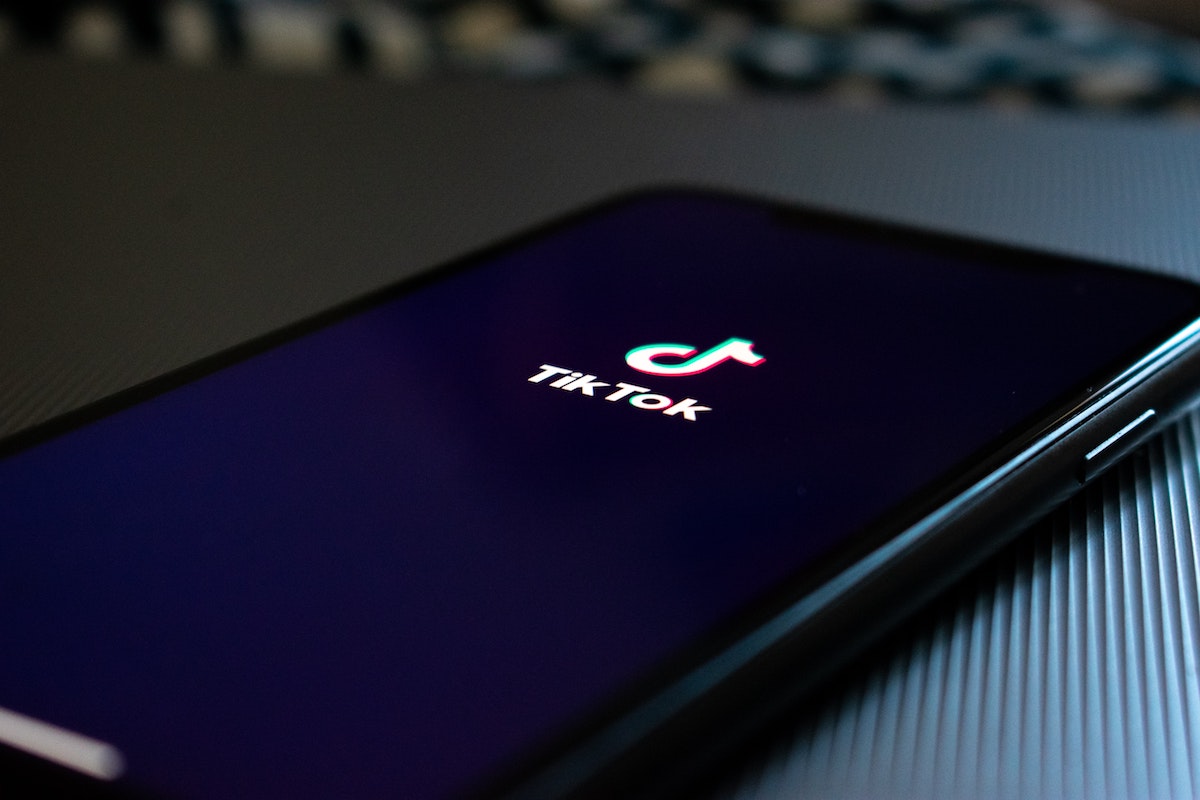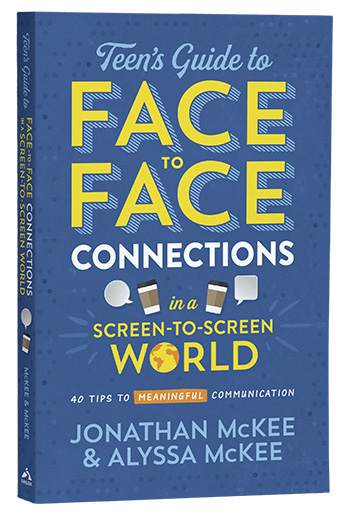
But does this actually make TikTok safe for your kids?
Jonathan McKee
Yes, TikTok’s been hit with record fines of almost 6 million dollars for collecting data on children.
Sure, TikTok has a reputation for attracting predators, specifically creepy adult men who like to watch little girls…after all, the overwhelming majority of young people keep their profiles public to attract more followers.
And it’s true, experts like Common Sense Media still recommend TikTok only for ages 15+ (recently lowered—it was 16+ earlier this year).
Nevertheless, any parent or youth worker will tell you…none of these facts have stopped young kids from wanting (and downloading) TikTok. And none of these concerns have kept TikTok from becoming “the app to have” during Covid-19, with 315 million downloads the first quarter of this year alone, the highest number of downloads for any app in a quarter.
But the negative headlines continue.
TikTok seems to be making strides to fix some of these concerns, the biggest being the launch of their “Family Pairing” feature allowing parents to remotely set restrictions on their kids’ accounts. The question is…
Does this actually make TikTok safe for your kids?
Meager Strides
A few months ago I gave you a sobering peek at the content your kids are exposed to if they are one of the 2 billion users who downloaded the hottest app since Snapchat. Since then, its popularity has only grown. It’s “the breakout Covid-19 social media platform” more than Snapchat, Instatram, Twitter or Instagram, and not just in the U.S. One in three Brits has TikTok installed on their device.
But the app is rife with concerns. No need to rehash all of these; you can read all about them in my recent article, Mom, Can I Have TikTok? But in short…
- The app defaults to Public, and most kids don’t ever switch it to Private. That means any creepy 40-year-old living in his mom’s basement can follow the majority of young users.
- Pedophiles have been using the app as a hunting ground. In fact, TikTok uses algorithms that track the kind of videos users like to watch, so these algorithms actually help pedophiles find more victims by steering “creepy basement guy” to content he enjoys, like little girls dancing.
- The “digital wellbeing” features the app provides are a joke, with screen limits that begin at 40 minutes, and a “restricted mode” that allows all kinds of inappropriate content through, like f-bombs and crude sexual preferences. (Give it a try. Sign up, flip the switch to “restricted mode” and flip through videos for just a few minutes.)
So will this new “Family Pairing” feature help parents protect their kids?
I’ll answer that with a very weak, “Sort of.”
First, I have to say I really like it when any social media creates a way for parents to link accounts with their kids. This prompts parents to do two important things:
 Download the app themselves and check out what their kids are doing. This is huge. And sadly, most parents don’t do it because it takes time and effort. But when you do, it gives you a glimpse into their world and another connection point with your kids.
Download the app themselves and check out what their kids are doing. This is huge. And sadly, most parents don’t do it because it takes time and effort. But when you do, it gives you a glimpse into their world and another connection point with your kids.- Open up doors of conversation about online safety. When parents “pair” with their kids’ accounts, most moms and dads will talk about some of the switches they flip. This dialogue is key. Parents can ask question like, “Why do you think it might be wise to set your account on private?” (And maybe read this article with them, The Unforeseen Problem with Insta Followers: why pedophiles and sex traffickers are loving social media) “Do you think we should allow anyone to send you direct messages, or just friends?” “What about this choice to allow anyone to duet with you?”
Any feature that provokes these kinds of conversation is great.
But sadly, family pairing doesn’t eliminate many of the concerns experts have with TikTok. In fact, Family Pairing can be disabled by your kid at any time, merely sending Mom or Dad a notification. I’ll let you decide whether this is a good thing. On one hand, this makes it more like “accountability software” than actual “restrictions.” If your 16-year-old disconnects from you, you’ll get a notification, and in most homes this will mean it’s time to sit down and talk. But if you are looking for controls that little Christopher can’t turn off in the middle of the night and simply apologize later…no such luck.
The main problem with Family Pairing is that it hasn’t improved any of the weak controls to begin with. Screen limit choices are still way too long, and restricted mode is still a joke.
But I am excited about one new feature TikTok changed, and that is as of April 30th, TikTok actually disabled DMs (direct messages) for registered accounts under the age of 16. This keeps creepy basement guy from DMing 13-year-olds.
The problem?
The same gargantuan problem that any social media app is experiencing, and that there is no way to truly verify age. And my guess is that a bunch of 13-year-olds are now going to miraculously turn 16 this month so they can receive DMs. Because DMs are one of the key ways young people connect with others, especially in a culture where they want to become influencers.
So how can Moms and Dads respond if their kids want TikTok, or if their kids already have TikTok and they’d like to make use of this Family Pairing?
Your Response—Six Tips
- Delay your response. Resist the urge to solve this problem in 5-minutes by saying, “No, because I said so.” Give it a little time. Pray for your relationship with your kids, specifically that God will give you wisdom as you balance bonding time with boundaries. Turn your overreaction into interaction.
- Spend a few minutes becoming educated. You’re already doing good with this by just reading this article. But also click on a few of the links in this article and see what other experts are saying. Maybe download the app yourself and take a peek for yourself. The app offers some really fun videos…and some questionable ones as well.
- Ask your kids what they think? Bring the subject up at dinner one night. Maybe even say, “You asked me about TikTok the other day, so I’ve been doing some research.” Yes, they’ll probably groan or begin squirming in their seats. Don’t do the expected and just lay down the law. Instead, ask, “So I’m curious, do you think the app has any concerns?” Hear them out. Step into their shoes and consider that most of their friends probably have the app and your kids might feel left out. This doesn’t mean you should cave and give your kids everything they want, but it can help you empathize and make them feel heard.
- Share a snippet of research with them. Maybe read them a paragraph or two of one of these articles—something that jumped out at you, and then, again, ask them what they think? Ask them specific questions about some of the TikTok settings.
- Don’t feel the pressure to decide right then and there. It’s okay to tell your kids, “Let’s talk more about this.” Sleep on it.
- Finally, walk with them helping them learn how to discern. As your kids get older, that could be as simple as saying, “You keep asking me for a phone…” or, “You keep asking me if you can have this new app? Let’s go through this book together and when you finish this book you can make the decision.”
TikTok is just one of many apps your kids will ask you about. So take a little time and figure out what sensible, bare-minimum screen-limits will help your kids. Your conversations with your kids about these important issues will help keep creepy basement guy in his own basement.
WANT TO ENGAGE YOUR KIDS IN THIS CONVERSATION? TAKE A PEEK AT JONATHAN’S NEW BOOK, TEEN’S GUIDE TO FACE-TO-FACE CONVERSATIONS IN A SCREEN-TO-SCREEN WORLD.
Jonathan McKee
Jonathan McKee is the author of over twenty books including the brand new The Guy's Guide to FOUR BATTLES Every Young Man Must Face; The Teen’s Guide to Social Media & Mobile Devices; If I Had a Parenting Do Over; and the Amazon Best Seller - The Guy's Guide to God, Girls and the Phone in Your Pocket. He speaks to parents and leaders worldwide, all while providing free resources for parents on his website TheSource4Parents.com. Jonathan, his wife Lori, and their three kids live in California.




Jeromesic
March 21, 2025 at 2:02 pmdang nh?p alo789: alo789hk – alo789
Arthurwef
March 24, 2025 at 1:42 amhttps://indiamedfast.shop/# cheapest online pharmacy india
canadian pharmacy 1 internet online drugstore
MonteMap
March 24, 2025 at 2:27 amMexican Pharm Inter mexican pharmacy online order MexicanPharmInter
Arthurwef
March 24, 2025 at 6:53 amhttp://indiamedfast.com/# online pharmacy india
canadian pharmacy online ship to usa
MonteMap
March 24, 2025 at 11:27 ammexican pharmacy online order Mexican Pharm Inter mexican pharmacy online store
Arthurwef
March 24, 2025 at 12:23 pmhttp://interpharmonline.com/# buy drugs from canada
canada pharmacy online
Jamesjiz
March 24, 2025 at 12:47 pmcanadian pharmacy scam: fda approved canadian online pharmacies – canadian drug stores
WillisLutle
March 24, 2025 at 4:56 pmhttps://indiamedfast.com/# india pharmacy without prescription
Arthurwef
March 24, 2025 at 5:57 pmhttps://indiamedfast.com/# online medicine shopping in india
canadianpharmacy com
MonteMap
March 24, 2025 at 9:03 pmMexicanPharmInter Mexican Pharm Inter reliable mexican pharmacies
WillisLutle
March 24, 2025 at 11:25 pmhttps://indiamedfast.shop/# online medicine shopping in india
Arthurwef
March 25, 2025 at 12:30 amhttps://mexicanpharminter.com/# buying from online mexican pharmacy
canadian pharmacy victoza
Arthurwef
March 25, 2025 at 7:03 amhttp://indiamedfast.com/# order medicines online india
pharmacy rx world canada
MonteMap
March 25, 2025 at 8:42 amlowest prescription prices online india online medicine shopping in india india online pharmacy store
Arthurwef
March 25, 2025 at 1:47 pmhttps://mexicanpharminter.com/# MexicanPharmInter
canada pharmacy reviews
Howardslutt
March 25, 2025 at 4:24 pmonline canadian pharmacy: certified canada pharmacy online – canadian world pharmacy
WillisLutle
March 25, 2025 at 7:53 pmhttp://mexicanpharminter.com/# mexican pharmacy online
Arthurwef
March 25, 2025 at 8:46 pmhttps://mexicanpharminter.shop/# reliable mexican pharmacies
canadian mail order pharmacy
MonteMap
March 25, 2025 at 8:47 pmIndia Med Fast India Med Fast lowest prescription prices online india
KennethLus
March 26, 2025 at 2:29 amhttps://kamagrakopen.pro/# kamagra jelly kopen
DwayneLah
March 26, 2025 at 7:29 amcialis without a doctor prescription cialis without a doctor prescription TadalafilEasyBuy.com
KennethLus
March 26, 2025 at 8:21 amhttps://tadalafileasybuy.shop/# cialis without a doctor prescription
KennethLus
March 26, 2025 at 2:09 pmhttps://kamagrakopen.pro/# kamagra jelly kopen
DwayneLah
March 26, 2025 at 5:01 pmbuy generic 100mg viagra online Generic 100mg Easy Generic 100mg Easy
KennethLus
March 27, 2025 at 3:12 amhttp://tadalafileasybuy.com/# Tadalafil Easy Buy
DwayneLah
March 27, 2025 at 4:13 amkamagra jelly kopen Kamagra Kopen KamagraKopen.pro
KennethLus
March 27, 2025 at 10:11 amhttps://kamagrakopen.pro/# Officiele Kamagra van Nederland
DwayneLah
March 27, 2025 at 3:51 pmcialis without a doctor prescription TadalafilEasyBuy.com Tadalafil Easy Buy
KennethLus
March 27, 2025 at 4:39 pmhttps://tadalafileasybuy.shop/# cialis without a doctor prescription
KennethLus
March 27, 2025 at 11:08 pmhttps://tadalafileasybuy.shop/# Tadalafil Tablet
DwayneLah
March 28, 2025 at 3:22 amkamagra kopen nederland Kamagra KamagraKopen.pro
KennethLus
March 28, 2025 at 5:27 amhttp://generic100mgeasy.com/# Generic100mgEasy
KennethLus
March 28, 2025 at 11:34 amhttps://kamagrakopen.pro/# Kamagra
DwayneLah
March 28, 2025 at 2:36 pmsildenafil online buy generic 100mg viagra online Generic100mgEasy
KennethLus
March 28, 2025 at 5:40 pmhttps://kamagrakopen.pro/# Kamagra
Jamesmig
March 28, 2025 at 11:03 pmpinup 2025 – пин ап казино
Jamesmig
March 29, 2025 at 5:12 amпин ап вход – пин ап казино
Jamesmig
March 29, 2025 at 11:40 amпин ап вход – пин ап казино официальный сайт
Jamesmig
March 29, 2025 at 6:08 pmпин ап казино – пин ап казино зеркало
Jamesmig
March 30, 2025 at 12:25 amпин ап казино зеркало – пинап казино
DwayneLah
March 30, 2025 at 5:53 amcialis without a doctor prescription Tadalafil Easy Buy Tadalafil Easy Buy
Jamesmig
March 30, 2025 at 6:56 ampinup 2025 – пинап казино
Jamesmig
March 30, 2025 at 1:26 pmпин ап зеркало – пин ап
DwayneLah
March 30, 2025 at 5:18 pmKamagra Kopen Online Kamagra kamagra jelly kopen
Jamesmig
March 30, 2025 at 7:49 pmпин ап казино зеркало – пин ап казино официальный сайт